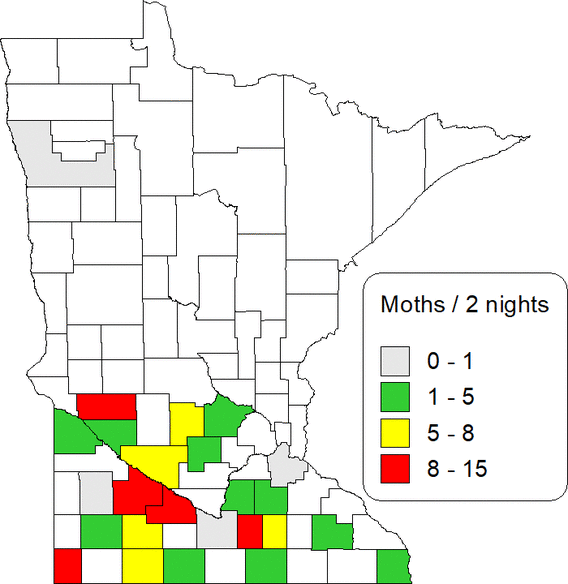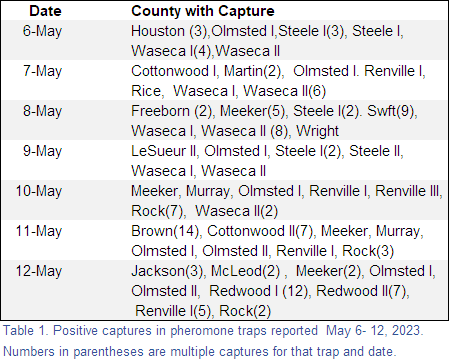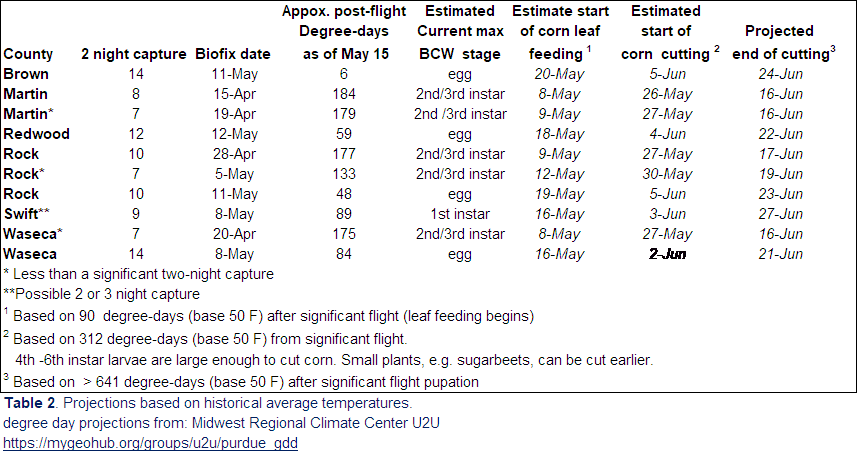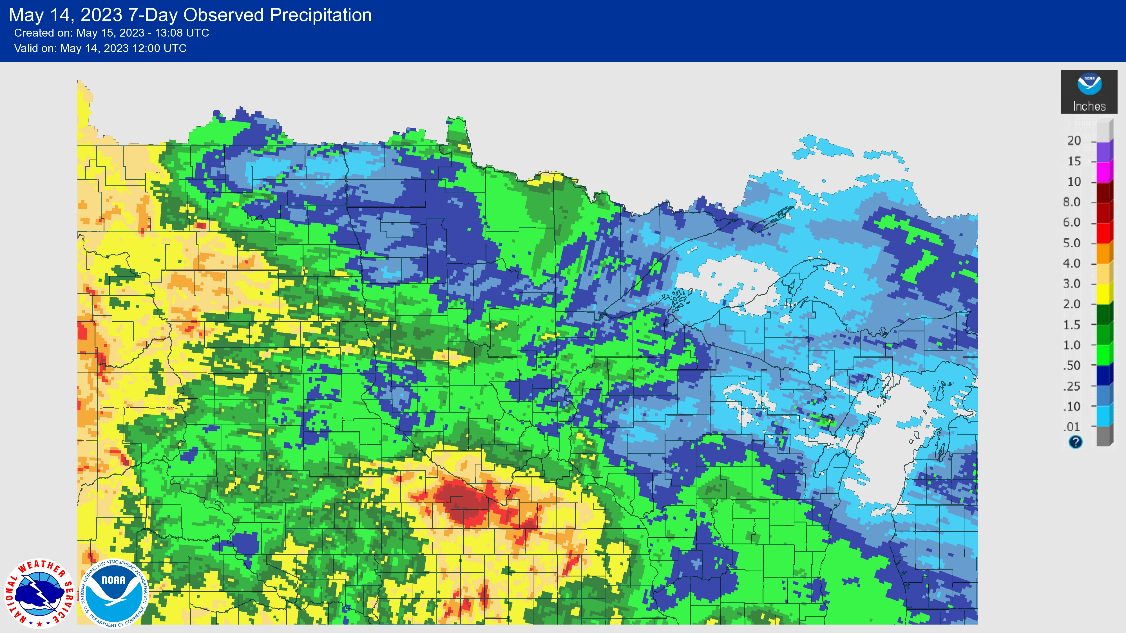For more information: https://z.umn.edu/bcw-reporting
May 16, 2023
Greetings:
A correction to last week’s newsletter: Corn, sugarbeet, and soybean fields worked after May 20 April 20 are at greater risk of infestation. Early emerging weeds or cover crops can make a field, or areas of a field, more attractive to egg laying black cutworm moths.

While good progress in planting was made in most areas, some corn,and quite a few soybeans, remain to be planted. Areas of southern Minnesota had planting delayed most of last week by wet weather. Standing water will lead to some replants. There is significant early season weed growth visible now.
Black cutworm (BCW) pheromone trap activity picked up last week. A train of weather systems brought heavy rainfall and numerous BCW moths into Minnesota starting May 11 (Figure 1, Table 1). There were additional significant captures after the 12th in Jackson and Olmsted Counties that will be included in next week’s issue. Fields of unworked soybean stubble or fields with heavy early season weed growth would be most attractive to these moths for egg-laying.
Leaf feeding from the earlier, significant BCW flights on corn or weeds should be underway now. Based on accumulated degree days, black cutworm larvae from the earlier significant flights detected by Martin and Rock County traps will be large enough to cut small corn by the end of May (Table 2). Larvae from the latest significant captures should be hatching with feeding becoming visible over the next few days.
The recent significant captures tend to follow the heavy rainfall events (Figure 2). These areas will see cutworm injury later in the season than the earlier significant flights in the southern two tiers of counties (Table 2). Risk to corn increases where these latest significant captures coincide with delayed planting as larger larvae feed on small corn.
Other areas may also have seen moths arriving. For example, although the area has seen less storm events, the Rock County trap has been consistently capturing BCW moths this spring and Swift County was on the northwest side of this system.
These latest captures indicate scouting for cutworms over the next few weeks will be important this year. Leaf feeding is usually your first clue to the presence of cutworms in the field.
The following checklist can help assess fields for BCW risk when scouting:
1) The field was unworked soybean stubble when significant flights occurred (Table 2) and/or has history of early season weeds such as lambsquarters or has an emerged cover crop.
2) A significant flight was detected within several counties of the field. However, the network is not capable of detecting all localized immigrations, so it is always important to be alert to cutworm injury.
3) If corn, the field is planted to a hybrid without an above ground Bt trait. These can be overwhelmed if attacked by large numbers of large BCW larvae.
4) Corn less than five leaves is at greatest risk. More rarely, somewhat larger corn may be killed by larvae tunneling into the growing point.
5) Corn rootworm insecticides and seed treatments can provide varying levels of BCW control.



True armyworm pheromone trap captures continue. Relatively low numbers in pheromone traps may represent a high population of moths. For example, a pheromone trap at the UMN Southwest Research and Outreach Center near Lamberton held 7 male armyworms while a blacklight trap nearby captured 193 armyworm moths. The weekend’s moth capture for these traps was 8 and more than 80.
These numbers represent an elevated risk for armyworm issues in grass crops. The moths will seek out lush, dense grasses to lay eggs. Problems arise when large numbers of eggs are laid in grass pastures, small grains, or live grass weeds and cover crops in corn. When large numbers of larvae deplete their food they will move to grass crops from field borders or adjacent fields.
Unlike BCW, the only corn Bt trait that is effective on true armyworm is Vip3a (e.g., Viptera, Leptra, Trecepta hybrids).
For more information on scouting tips and management of black cutworm see https://extension.umn.edu/corn-pest-management/black-cutworm.
For scouting and management tips for armyworms see https://extension.umn.edu/corn-pest-management/armyworm.
Please let me know if you become aware of fields with cutworm or armyworm problems.
Until next week,
Bruce
